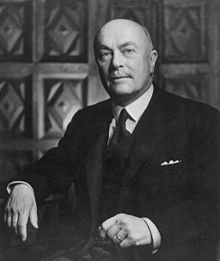1939 Belgian general election
This article needs additional citations for verification. (August 2019) |
| |||||||||||||||||||||||||||||||||||||||||||||||||||||||||||||||||||||||||||||||||||||
All 202 seats in the Chamber of Representatives All 101 seats in the Senate | |||||||||||||||||||||||||||||||||||||||||||||||||||||||||||||||||||||||||||||||||||||
|---|---|---|---|---|---|---|---|---|---|---|---|---|---|---|---|---|---|---|---|---|---|---|---|---|---|---|---|---|---|---|---|---|---|---|---|---|---|---|---|---|---|---|---|---|---|---|---|---|---|---|---|---|---|---|---|---|---|---|---|---|---|---|---|---|---|---|---|---|---|---|---|---|---|---|---|---|---|---|---|---|---|---|---|---|---|
| |||||||||||||||||||||||||||||||||||||||||||||||||||||||||||||||||||||||||||||||||||||
| |||||||||||||||||||||||||||||||||||||||||||||||||||||||||||||||||||||||||||||||||||||

General elections were held in Belgium on 2 April 1939.[1] The result was a victory for the Catholic Party, which won 67 of the 202 seats in the Chamber of Representatives. Voter turnout was 93.3%.[2]
On 22 February 1939, the Pierlot Government succeeded the Spaak Government. The Government was in a political crisis caused by, among other things, the Affair. As the Pierlot Government fell as well and the ministers failed to form a stable government, King Leopold III insisted on a dissolution of parliament, but the council of ministers refused due to fear for electoral losses. It was not Prime Minister Pierlot, but the Minister of the Interior who provided the required contreseing of the royal order of 6 March 1939 which dissolved the Chambers and triggered the snap elections.
After the election, Pierlot continued as Prime Minister. The elections were the last ones before the Second World War.
Results[]
Chamber of Representatives[]
 | |||||||||
| Party | Votes | % | Seats | +/– | |||||
|---|---|---|---|---|---|---|---|---|---|
| Catholic Party | 594,133 | 30.38 | 67 | +6 | |||||
| Belgian Labour Party | 575,775 | 29.44 | 64 | –6 | |||||
| Liberal Party | 335,966 | 17.18 | 33 | +10 | |||||
| Flemish National Union | 164,253 | 8.40 | 17 | +1 | |||||
| Communist Party of Belgium | 90,856 | 4.65 | 9 | 0 | |||||
| Rexist Party | 83,047 | 4.25 | 4 | –17 | |||||
| Catholic Flemish People's Party | 62,548 | 3.20 | 6 | New | |||||
| Technocrat Party | 10,843 | 0.55 | 1 | New | |||||
| Anc. Combat./Oudstrijder | 10,630 | 0.54 | 1 | New | |||||
| Heimattreue Front | 8,057 | 0.41 | 0 | New | |||||
| Walloon Party | 7,370 | 0.38 | 0 | New | |||||
| Afgescheurde Socialists | 5,136 | 0.26 | 0 | New | |||||
| Afgescheurde Liberals | 4,228 | 0.22 | 0 | New | |||||
| Action Soc. Rév. - Rev | 2,119 | 0.11 | 0 | New | |||||
| Lahaut List | 367 | 0.02 | 0 | New | |||||
| Liste De Keyser (Tchno) | 343 | 0.02 | 0 | New | |||||
| Walloon Dissident Party | 317 | 0.02 | 0 | New | |||||
| Verbist | 195 | 0.01 | 0 | New | |||||
| Independents | 91 | 0.00 | 0 | 0 | |||||
| Invalid/blank votes | 151,342 | – | – | – | |||||
| Total | 2,107,156 | 100 | 202 | 0 | |||||
| Registered voters/turnout | 2,667,341 | 79.00 | – | – | |||||
| Source: Belgian Elections | |||||||||
Senate[]
 | |||||||||
| Party | Votes | % | Seats | +/– | |||||
|---|---|---|---|---|---|---|---|---|---|
| Catholic Party | 703,250 | 30.71 | 35 | +1 | |||||
| Belgian Labour Party | 701,552 | 30.64 | 35 | –4 | |||||
| Liberal Party | 402,326 | 17.57 | 16 | +5 | |||||
| Flemish National Union | 177,666 | 7.76 | 8 | +3 | |||||
| Communist Party of Belgium | 115,308 | 5.04 | 3 | –1 | |||||
| Rexist Party | 94,543 | 4.13 | 1 | –7 | |||||
| Catholic Flemish People's Party | 62,976 | 2.75 | 3 | New | |||||
| Independents | 32,209 | 1.41 | 0 | – | |||||
| Invalid/blank votes | 199,033 | – | – | – | |||||
| Total | 2,488,863 | 100 | 101 | 0 | |||||
| Registered voters/turnout | 2,667,341 | 93.31 | – | – | |||||
| Source: Belgian elections | |||||||||
References[]
- ^ Dieter Nohlen & Philip Stöver (2010) Elections in Europe: A data handbook, p289 ISBN 978-3-8329-5609-7
- ^ Nohlen & Stöver, p290
- 1939 elections in Europe
- 1930s elections in Belgium
- 1939 in Belgium
- April 1939 events




